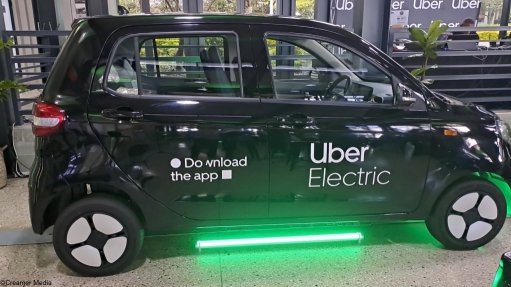Google Maps celebrates 20 years of mapping the world
Internet services company Google celebrates 20 years of providing its Google Map digital map and exploration service, which has expanded since 2005 to include real-time traffic information, Street View and the newer AI-powered Live View, Immerse View and Gemini AI interaction tool.
Google Maps launched on desktop on February 8, 2005, to help people navigate from point A to point B. Later in the year, a handful of engineers launched Google Transit Trip Planner in Portland, Oregon, US, in a project that would later become real-time transit information on Google Maps.
Google Maps, in 2025, has partnerships with more than 10 000 transit agencies around the world.
In 2007, the company launched real-time traffic information in more than 30 US cities, which helped people instantly understand how congested their route was thanks to green, red and yellow roads on the map.
“When you look up traffic on Google Maps, you’re actually seeing millions of algorithmically-powered predictions happening in real time,” the company highlights.
Street View was launched in 2007 after Google co-founder Larry Page had an idea to drive down a street and collect imagery, which has since become an essential part of how the company maps the world.
Google Maps has collected billions of images and strapped cameras to everything from snowmobiles to camels to achieve this. Street View has imagery that covers more than 20-million kilometres, which is the equivalent of circling the globe about 500 times, the company illustrates.
The mobile phone version of Google Maps was launched in 2007. In 2009, it launched turn-by-turn navigation, which let people confidently navigate to unfamiliar places with just the phone in their pocket.
Further, in 2014, the company made it even easier to find more helpful information about places, including business open hours, ratings, and price ranges for restaurants, bars and hotels.
“Today, this information is available for more than 250-million places around the world,” the company adds.
Moving into the AI-powered era, in 2019, Google Maps added Live View, named Lens in Maps walking navigation, which uses AI and augmented reality to guide people when walking around.
In 2023, with the launch of Immersive View, Google Maps changed the way people explore landmarks, parks, stadiums and routes owing to advances in computer vision, AI and billions of images.
People can use Google Maps to see stunning imagery and can also overlay helpful information about the weather and traffic on top to know what to expect before they head out.
In 2024, Google Maps introduced Gemini, which has powerful creation, reasoning and summarisation capabilities grounded in its trusted data on about 250-million places around the world and insights from its Maps community.
People can interact with Gemini-powered Google Maps via voice or text to navigate or find things to do, the company says.
Meanwhile, as part of its anniversary, Google Maps has revealed some of the most searched for places in South Africa.
The most reviewed restaurants are RocoMamas Mall of Africa, in Gauteng; the Wimpy King Shaka International, in KwaZulu-Natal; the Irene Farm, in Gauteng; the Wimpy Oribi Plaza, in KwaZulu-Natal; and the Quay Four Restaurant, in Cape Town.
Similarly, the most reviewed cafes are Truth Coffee Roasting, in Cape Town; EL&N London in the Mall of Africa, Gauteng; the Cubana Foreshore, in Cape Town; the Starbucks Florida Road, in KwaZulu-Natal; and the Baobab Cafe and Grill, in Gauteng.
The country's most reviewed visitor attractions are the Gandhi Square Precinct, in Johannesburg; Graskop Gorge Lift Company, in KwaZulu-Natal; God’s Window, in Mpumalanga; the Redberry Farm, in the Western Cape; and the Voortrekker Monument, in Gauteng.
Additionally, South Africa's most reviewed museums are the Maropeng Cradle of Humankind World Heritage site, in Gauteng; the Constitution Hill Human Rights Precinct, in Johannesburg; the Apartheid Museum, in Johannesburg; the Iziko Bo-Kaap Museum, in Cape Town; and Mandela's House, in Johannesburg.
Its most reviewed parks are Table Mountain National Park, in Cape Town; Kruger National Park, in Mpumalanga; Green Point Park, in Cape Town; the Cape Point Nature Reserve, also in Cape Town; and Zoo Lake, in Johannesburg.
Article Enquiry
Email Article
Save Article
Feedback
To advertise email advertising@creamermedia.co.za or click here
Comments
Press Office
Announcements
What's On
Subscribe to improve your user experience...
Option 1 (equivalent of R125 a month):
Receive a weekly copy of Creamer Media's Engineering News & Mining Weekly magazine
(print copy for those in South Africa and e-magazine for those outside of South Africa)
Receive daily email newsletters
Access to full search results
Access archive of magazine back copies
Access to Projects in Progress
Access to ONE Research Report of your choice in PDF format
Option 2 (equivalent of R375 a month):
All benefits from Option 1
PLUS
Access to Creamer Media's Research Channel Africa for ALL Research Reports, in PDF format, on various industrial and mining sectors
including Electricity; Water; Energy Transition; Hydrogen; Roads, Rail and Ports; Coal; Gold; Platinum; Battery Metals; etc.
Already a subscriber?
Forgotten your password?
Receive weekly copy of Creamer Media's Engineering News & Mining Weekly magazine (print copy for those in South Africa and e-magazine for those outside of South Africa)
➕
Recieve daily email newsletters
➕
Access to full search results
➕
Access archive of magazine back copies
➕
Access to Projects in Progress
➕
Access to ONE Research Report of your choice in PDF format
RESEARCH CHANNEL AFRICA
R4500 (equivalent of R375 a month)
SUBSCRIBEAll benefits from Option 1
➕
Access to Creamer Media's Research Channel Africa for ALL Research Reports on various industrial and mining sectors, in PDF format, including on:
Electricity
➕
Water
➕
Energy Transition
➕
Hydrogen
➕
Roads, Rail and Ports
➕
Coal
➕
Gold
➕
Platinum
➕
Battery Metals
➕
etc.
Receive all benefits from Option 1 or Option 2 delivered to numerous people at your company
➕
Multiple User names and Passwords for simultaneous log-ins
➕
Intranet integration access to all in your organisation

















